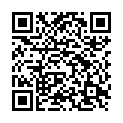|
|
|
| Module code: FTM-PAEF |
|
|
3V+1U+1P (5 hours per week) |
|
6 |
| Semester: 2 |
| Mandatory course: yes |
Language of instruction:
German |
Assessment:
Oral examination
[updated 30.10.2023]
|
FTM-PAEF (P242-0113, P242-0114, P242-0123) Automotive Engineering, Master, ASPO 01.04.2021
, semester 2, mandatory course
FTM-PAEF (P242-0113, P242-0114, P242-0123) Automotive Engineering, Master, ASPO 01.04.2023
, semester 2, mandatory course
|
75 class hours (= 56.25 clock hours) over a 15-week period.
The total student study time is 180 hours (equivalent to 6 ECTS credits).
There are therefore 123.75 hours available for class preparation and follow-up work and exam preparation.
|
Recommended prerequisites (modules):
None.
|
Recommended as prerequisite for:
|
Module coordinator:
Prof. Dr.-Ing. Thomas Heinze |
Lecturer: Prof. Dr.-Ing. Thomas Heinze
[updated 20.12.2021]
|
Learning outcomes:
After successfully completing this course, students will be familiar with the structure and design of modern control units and be able to program and apply them.
[updated 30.10.2023]
|
Module content:
- Difference between programming & application
Programming
ECU structure
Object-related programming
ASCET / ESDL
V-model , DevOps
HIL, SIL, MIL, rapid prototyping
- Autosar-OS (real-time operating system)
State machines
Application
Interfaces
- CCP / ETK / (Zukunft 1000Base-T1/1000Base-RH)
ASAM MCD 2 MC (*.a2l) and *.hex file
PLACE OF BIRTH
Working environment, project, experiment
Work, reference page
Variables
Measuring grid
Application data manager
Cut-outs
[updated 30.10.2023]
|
Teaching methods/Media:
Lecture with exercises
[updated 30.10.2023]
|
Recommended or required reading:
Automotive Software Engineering; Jörg SchäuffeleThomas Zurawka; ISBN:978-3-8348-9368-0
Fahrzeuginformatik; Fabian Wolf; ISBN: 978-3-658-21224-7
[updated 30.10.2023]
|

